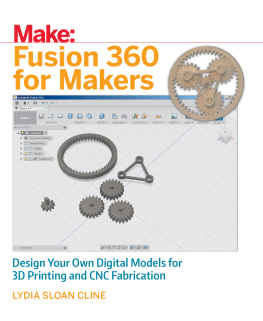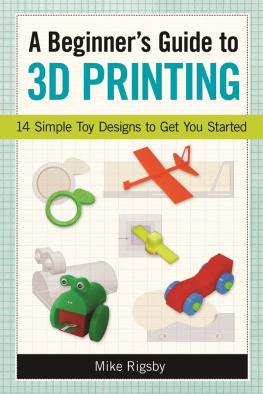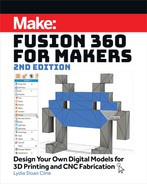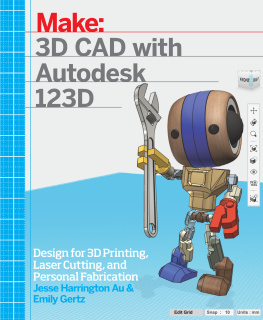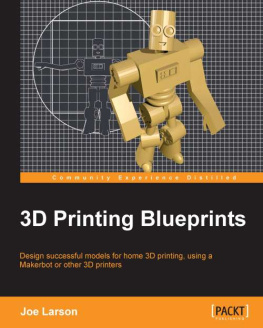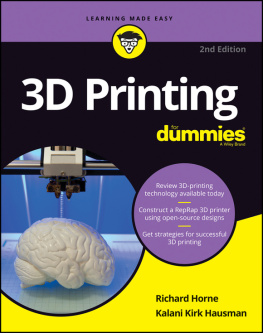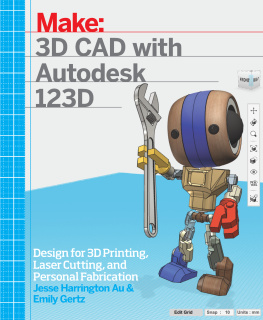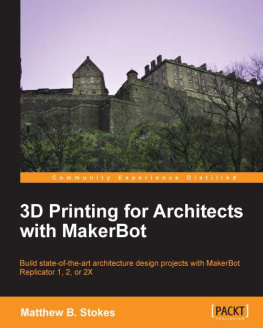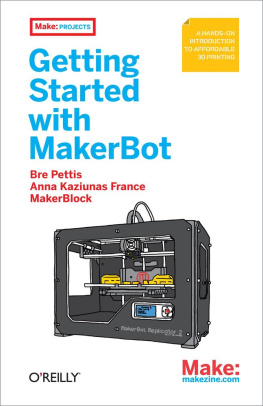Copyright 2015 by McGraw-Hill Education. All rights reserved. Except as permitted under the United States Copyright Act of 1976, no part of this publication may be reproduced or distributed in any form or by any means, or stored in a database or retrieval system, without the prior written permission of the publisher.
ISBN: 978-0-07-183348-6
MHID: 0-07-183348-X
The material in this eBook also appears in the print version of this title: ISBN: 978-0-07-183347-9, MHID: 0-07-183347-1.
eBook conversion by codeMantra
Version 1.0
All trademarks are trademarks of their respective owners. Rather than put a trademark symbol after every occurrence of a trademarked name, we use names in an editorial fashion only, and to the benefit of the trademark owner, with no intention of infringement of the trademark. Where such designations appear in this book, they have been printed with initial caps.
McGraw-Hill Education eBooks are available at special quantity discounts to use as premiums and sales promotions, or for use in corporate training programs. To contact a representative please visit the Contact Us page at www.mhprofessional.com.
McGraw-Hill Education, the McGraw-Hill Education Publishing logo, TAB, and related trade dress are trademarks or registered trademarks of McGraw-Hill Education and/or its affi liates in the United States and other countries and may not be used without written permission. All other trademarks are the property of their respective owners. McGraw-Hill Education is not associated with any product or vendor mentioned in this book.
Information has been obtained by McGraw-Hill Education from sources believed to be reliable. However, because of the possibility of human or mechanical error by our sources, McGraw-Hill Education, or others, McGraw-Hill Education does not guarantee the accuracy, adequacy, or completeness of any information and is not responsible for any errors or omissions or the results obtained from the use of such information.
TERMS OF USE
This is a copyrighted work and McGraw-Hill Education and its licensors reserve all rights in and to the work. Use of this work is subject to these terms. Except as permitted under the Copyright Act of 1976 and the right to store and retrieve one copy of the work, you may not decompile, disassemble, reverse engineer, reproduce, modify, create derivative works based upon, transmit, distribute, disseminate, sell, publish or sublicense the work or any part of it without McGraw-Hill Educations prior consent. You may use the work for your own noncommercial and personal use; any other use of the work is strictly prohibited. Your right to use the work may be terminated if you fail to comply with these terms.
THE WORK IS PROVIDED AS IS. McGRAW-HILL EDUCATION AND ITS LICENSORS MAKE NO GUARANTEES OR WARRANTIES AS TO THE ACCURACY, ADEQUACY OR COMPLETENESS OF OR RESULTS TO BE OBTAINED FROM USING THE WORK, INCLUDING ANY INFORMATION THAT CAN BE ACCESSED THROUGH THE WORK VIA HYPERLINK OR OTHERWISE, AND EXPRESSLY DISCLAIM ANY WARRANTY, EXPRESS OR IMPLIED, INCLUDING BUT NOT LIMITED TO IMPLIED WARRANTIES OF MERCHANTABILITY OR FITNESS FOR A PARTICULAR PURPOSE. McGraw-Hill Education and its licensors do not warrant or guarantee that the functions contained in the work will meet your requirements or that its operation will be uninterrupted or error free. Neither McGraw-Hill Education nor its licensors shall be liable to you or anyone else for any inaccuracy, error or omission, regardless of cause, in the work or for any damages resulting therefrom. McGraw-Hill Education has no responsibility for the content of any information accessed through the work. Under no circumstances shall McGraw-Hill Education and/or its licensors be liable for any indirect, incidental, special, punitive, consequential or similar damages that result from the use of or inability to use the work, even if any of them has been advised of the possibility of such damages. This limitation of liability shall apply to any claim or cause whatsoever whether such claim or cause arises in contract, tort or otherwise.
To Makers everywhere.
And a big thanks to
Roger, Amber, and Christie, who indulge my mad scientist projects.
Guillermo Melantoni and Christian Pramuk, program managers of the
Autodesk 123D suite, for their assistance with this book.
The Autodesk company, whose products enable Makers all over the globe
to draw their dreams and earn their livings.
About the Author
Lydia Cline has been using Autodesk products in her work for architecture firms since AutoCAD version 1.0 was released. She judges competitive technology events, writes textbooks, creates open source educational materials, and teaches at Johnson County Community College in Overland Park, Kansas.
Contents
Preface
THE PAST 10 YEARS have seen an explosion of interest and potential in 3D printing. Novices and professionals are using it to make their lives and jobs more rewarding and productive. When this technology is combined with websites such as Quirky, Kickstarter, Indiegogo, Prosper, Etsy, Shapeways, Ponoko, and Facebook, people are empowered to turn hobbies into businesses, start side businesses, and leave jobs they no longer like or that have left them. 3D printing is truly a part of the New Industrial Revolution.
Thought leaders compare current 3D printers to the dot-matrix printers and the Apple Macintosh of the early 1980s. Being competitive will eventually require knowledge of this technology because it will surely disrupt and innovate in diverse fields. Electronics, toy, food, and automotive companies are experimenting with it, as is the construction industry and the military. 3D printing solutions are being considered as answers to substandard housing in developing countries and in other applications we can barely imagine right now.
Creating, manufacturing, and advertising is becoming democratized due to affordable tools and low start-up costs. No matter what your age or background is, you can participate; the barriers are low. The same way that software and laser printers let anyone publish from their kitchen table, and WordPress and websites let anyone open a nice storefront, now anyone with knowledge of 3D software and printing technology can put out a product. Although no one foresees an end to mass manufacturing, its a good bet that micro-manufacturing and just-in-time manufacturing catering to niche and customization markets will get bigger (see ). One size no longer fits all.

Figure 1 At www.makie.me, customers can select features for dolls, which are then 3D-printed and shipped to them. These dolls were displayed at Autodesk University.
Websites such as Thingiverse and Instructables, where designs are freely shared, let the world tinker with, customize, and improve each others work in the spirit of open source. Maker Faires let them show off what theyve done.
The MakerBot company has crowd-sourced an effort to get a 3D printer in every classroom. Making may (and should) eventually be part of the curriculum. The nascent Maker Movement might counter cheap overseas labor and bring manufacturing back to the U.S. 3D printing is for teachers, students, homeschoolers, dreamers, entrepreneurs, and the merely curiousand because youre holding this book, youre obviously interested in it! You may already have some concrete ideas about what youd like to do. So, congratulations in finding your way here, because now youll learn how to turn those ideas into a physical product.



